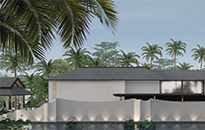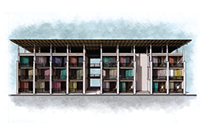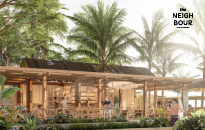|
||||
|
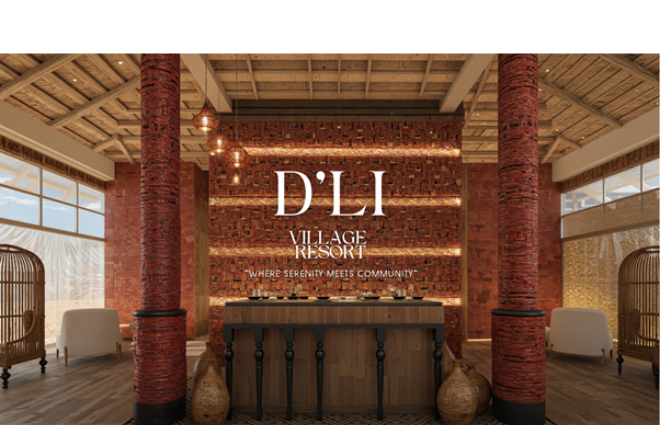
THESIS 2567: INTERIOR ARCHITECTURAL DESIGN PROPOSAL FOR D’LI VILLAGE RESORT, DON HOILOT, SAMUT SONGKRAM, THAILAND
2505588 THESIS 2567
PROJECT: INTERIOR ARCHITECTURAL DESIGN PROPOSAL FOR D’LI VILLAGE RESORT, DON HOILOT, SAMUT SONGKRAM, THAILAND
STUDENT : NATTAWEE SUWANNARAT
LOCATION: DON HOILOT, SAMUT SONGKRAM, THAILAND
AREA: 2,820 sq.m.
D’li Village Resort is a 4-star eco-resort set along the coastal lands of Don Hoi Lot in Samut Songkhram, Thailand. Thoughtfully designed to harmonize with the region’s rich natural ecosystems, cultural heritage, and local community, the resort embraces the philosophy of “serenity meets community.” By revitalizing an outdated tourist area, D’li Village establishes a new provincial destination — one that invites visitors to engage deeply with local culture while safeguarding the area's fragile, endangered environment. The resort stands as a model of truly sustainable tourism.
This vision is reflected in the resort’s program, which offers community-driven workshop spaces and encourages guests to explore the surrounding area by bicycle, participating in local activities, crafts, and dining experiences along a designated trail. This approach helps distribute tourism benefits across the wider community, creating meaningful connections between visitors and residents.
The resort’s interior design draws profound inspiration from the cultural legacy and environment of the region, blending the artistry of the indigenous Mon culture with the coastal traditions of the Lay people. For example, the Lobby’s design features elements reminiscent of ancient Mon temples, while the restaurant incorporates motifs inspired by the fishing tools and practices of the Lay community. Throughout the resort, the thoughtful fusion of Mon and Lay influences brings each space to life, offering guests an immersive cultural experience.
With a deep commitment to community, culture, and the environment, D’li Village Resort is more than a destination — it is a journey into a more connected, meaningful, and sustainable way of travel. As a resort that grows with the community, it fosters lasting relationships between guests and locals, making tourism a force for shared prosperity and cultural pride.
The original Bann Talay Sea Cream Resort is located adjacent to Don Hoi Lot, a renowned coastal tourist destination in Samut Songkhram Province, Thailand. This coastal area was once celebrated for its vibrant local cuisine and distinctive activities that drew both Thai and international visitors, such as market shopping along the shoreline, razor clam harvesting, and coastal cruising. Uniquely, it is home to one of Thailand’s most important wetland ecosystems, recognized under the Ramsar Convention as a site of international environmental significance. Unlike conventional beaches, Don Hoi Lot is defined by expansive mudflats teeming with razor clams — a natural feature that inspired the site's Thai name.
However, in recent years, the area's popularity has steadily declined, a trend that was greatly accelerated by the COVID-19 pandemic. Once lively, the site is now noticeably quiet.
This reality has inspired the proposed transformation of Bann Talay Sea Cream Resort into the new D’li Village Resort — a project aimed not only at revitalizing the property but also at aligning with the province’s eco-tourism vision, celebrating its rich cultural heritage, and reinvigorating the local economy. The concept is built around supporting and growing alongside the community, under the theme of “where serenity meets community.” The resort will be elevated from a 3-star to a 4-star standard, offering a more luxurious, experience-driven approach targeted at a broader audience, including friend groups, families, couples, and eco-cultural travelers. The brand’s new identity will present a friendlier, more stylish, and culturally rich character.
The renovation will cover approximately 2,820 square meters, including areas such as the lobby, restaurant, conference spaces, hotel rooms, villas, and a spa. The new program is designed to empower the local community, introducing flexible workshop spaces, modern hospitality services like spa facilities and cafés, and stylish souvenir shops that reflect the resort’s new character. Guest accommodations, including villas and hotel rooms, will be reimagined to meet the expectations of today’s market.
A large existing reservoir within the site will be incorporated into the guest experience, offering scenic views and opportunities for internal adventure activities such as canoeing, bridge trails over the water, and casual cycling. In addition, the resort will provide bicycles for guests to explore the specially designed D’li Trails — pathways connecting visitors to local restaurants, artisan workshops, and cultural stops, including seafood eateries, canal-side cafés, coconut craft pavilions, seashell artistry studios, and sustainable shrimp fishing huts.
The interior design takes deep inspiration from the traditions of the Mon and Lay communities. Public areas and guest rooms will feature Mon cultural materials, motifs, decorative patterns, antique furnishings, and temple-inspired artifacts, interwoven with elements from Lay coastal life, such as woodwork, traditional fishing tools, and seashell art. The spa, inspired by the natural mudflat ecosystem, will evoke the feeling of a masonry cave, offering guests a unique and immersive connection to nature.
Through these layered design approaches, D’li Village Resort aims to craft a distinctive identity — one that is deeply rooted in cultural heritage, environmental stewardship, and community connection.
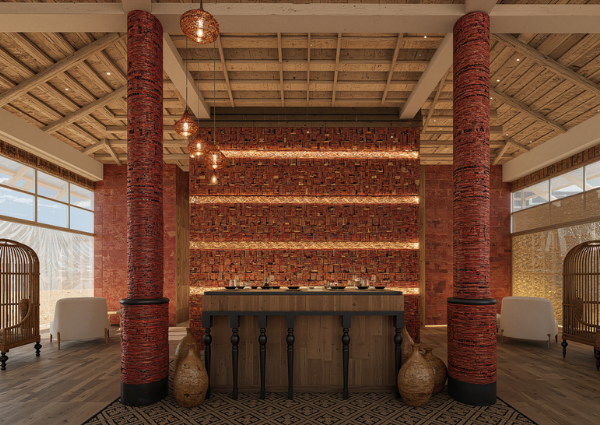
LOBBY
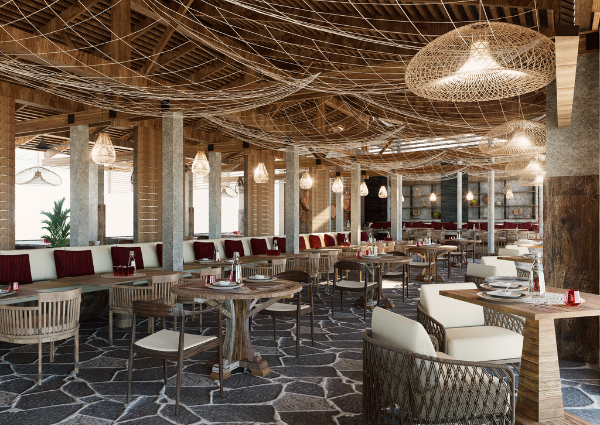
RESTAURANT

CAFE
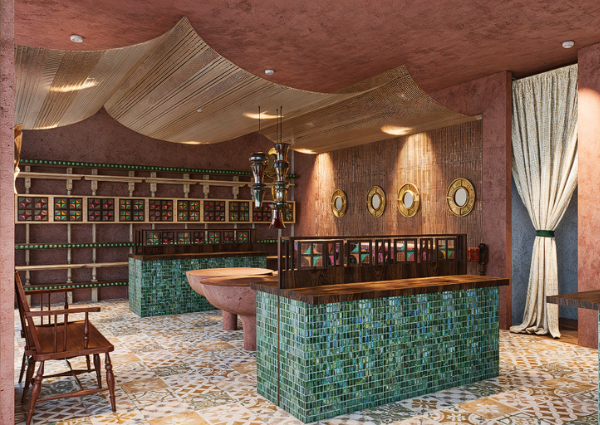
SOUVENIR
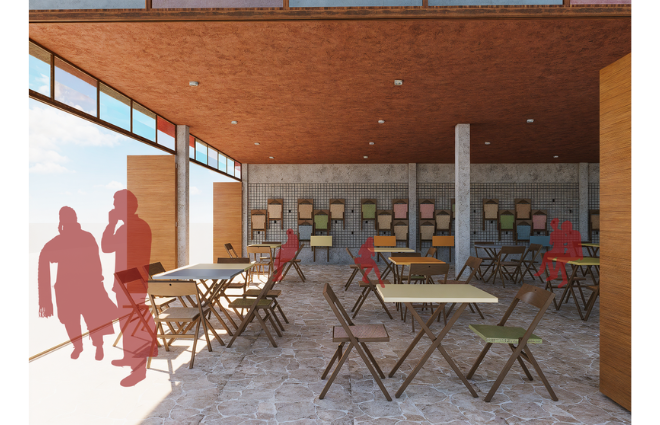
COMMUNITY
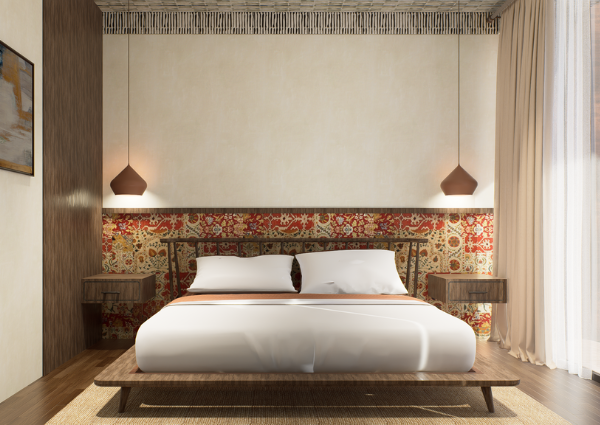
GUESTROOM
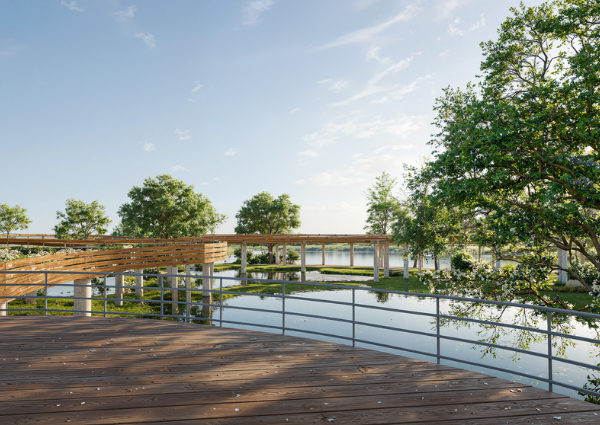
INTERNAL LAKE TRAIL
PROJECT: INTERIOR ARCHITECTURAL DESIGN PROPOSAL FOR D’LI VILLAGE RESORT, DON HOILOT, SAMUT SONGKRAM, THAILAND
STUDENT : NATTAWEE SUWANNARAT
LOCATION: DON HOILOT, SAMUT SONGKRAM, THAILAND
AREA: 2,820 sq.m.
D’li Village Resort is a 4-star eco-resort set along the coastal lands of Don Hoi Lot in Samut Songkhram, Thailand. Thoughtfully designed to harmonize with the region’s rich natural ecosystems, cultural heritage, and local community, the resort embraces the philosophy of “serenity meets community.” By revitalizing an outdated tourist area, D’li Village establishes a new provincial destination — one that invites visitors to engage deeply with local culture while safeguarding the area's fragile, endangered environment. The resort stands as a model of truly sustainable tourism.
This vision is reflected in the resort’s program, which offers community-driven workshop spaces and encourages guests to explore the surrounding area by bicycle, participating in local activities, crafts, and dining experiences along a designated trail. This approach helps distribute tourism benefits across the wider community, creating meaningful connections between visitors and residents.
The resort’s interior design draws profound inspiration from the cultural legacy and environment of the region, blending the artistry of the indigenous Mon culture with the coastal traditions of the Lay people. For example, the Lobby’s design features elements reminiscent of ancient Mon temples, while the restaurant incorporates motifs inspired by the fishing tools and practices of the Lay community. Throughout the resort, the thoughtful fusion of Mon and Lay influences brings each space to life, offering guests an immersive cultural experience.
With a deep commitment to community, culture, and the environment, D’li Village Resort is more than a destination — it is a journey into a more connected, meaningful, and sustainable way of travel. As a resort that grows with the community, it fosters lasting relationships between guests and locals, making tourism a force for shared prosperity and cultural pride.
The original Bann Talay Sea Cream Resort is located adjacent to Don Hoi Lot, a renowned coastal tourist destination in Samut Songkhram Province, Thailand. This coastal area was once celebrated for its vibrant local cuisine and distinctive activities that drew both Thai and international visitors, such as market shopping along the shoreline, razor clam harvesting, and coastal cruising. Uniquely, it is home to one of Thailand’s most important wetland ecosystems, recognized under the Ramsar Convention as a site of international environmental significance. Unlike conventional beaches, Don Hoi Lot is defined by expansive mudflats teeming with razor clams — a natural feature that inspired the site's Thai name.
However, in recent years, the area's popularity has steadily declined, a trend that was greatly accelerated by the COVID-19 pandemic. Once lively, the site is now noticeably quiet.
This reality has inspired the proposed transformation of Bann Talay Sea Cream Resort into the new D’li Village Resort — a project aimed not only at revitalizing the property but also at aligning with the province’s eco-tourism vision, celebrating its rich cultural heritage, and reinvigorating the local economy. The concept is built around supporting and growing alongside the community, under the theme of “where serenity meets community.” The resort will be elevated from a 3-star to a 4-star standard, offering a more luxurious, experience-driven approach targeted at a broader audience, including friend groups, families, couples, and eco-cultural travelers. The brand’s new identity will present a friendlier, more stylish, and culturally rich character.
The renovation will cover approximately 2,820 square meters, including areas such as the lobby, restaurant, conference spaces, hotel rooms, villas, and a spa. The new program is designed to empower the local community, introducing flexible workshop spaces, modern hospitality services like spa facilities and cafés, and stylish souvenir shops that reflect the resort’s new character. Guest accommodations, including villas and hotel rooms, will be reimagined to meet the expectations of today’s market.
A large existing reservoir within the site will be incorporated into the guest experience, offering scenic views and opportunities for internal adventure activities such as canoeing, bridge trails over the water, and casual cycling. In addition, the resort will provide bicycles for guests to explore the specially designed D’li Trails — pathways connecting visitors to local restaurants, artisan workshops, and cultural stops, including seafood eateries, canal-side cafés, coconut craft pavilions, seashell artistry studios, and sustainable shrimp fishing huts.
The interior design takes deep inspiration from the traditions of the Mon and Lay communities. Public areas and guest rooms will feature Mon cultural materials, motifs, decorative patterns, antique furnishings, and temple-inspired artifacts, interwoven with elements from Lay coastal life, such as woodwork, traditional fishing tools, and seashell art. The spa, inspired by the natural mudflat ecosystem, will evoke the feeling of a masonry cave, offering guests a unique and immersive connection to nature.
Through these layered design approaches, D’li Village Resort aims to craft a distinctive identity — one that is deeply rooted in cultural heritage, environmental stewardship, and community connection.

LOBBY

RESTAURANT

CAFE

SOUVENIR

COMMUNITY

GUESTROOM

INTERNAL LAKE TRAIL
| MORE | ||||||||||||||||||||||||||||||||||
|
